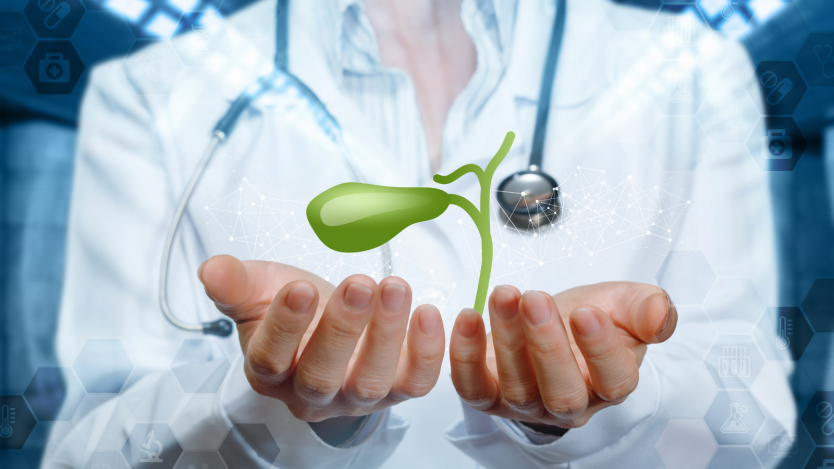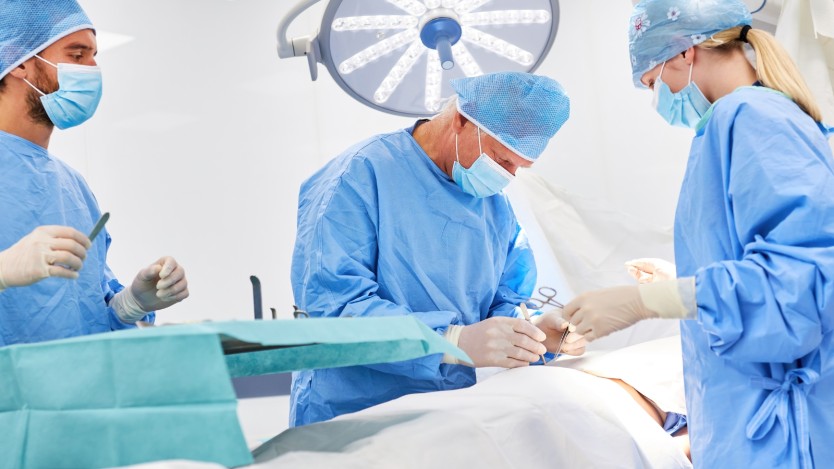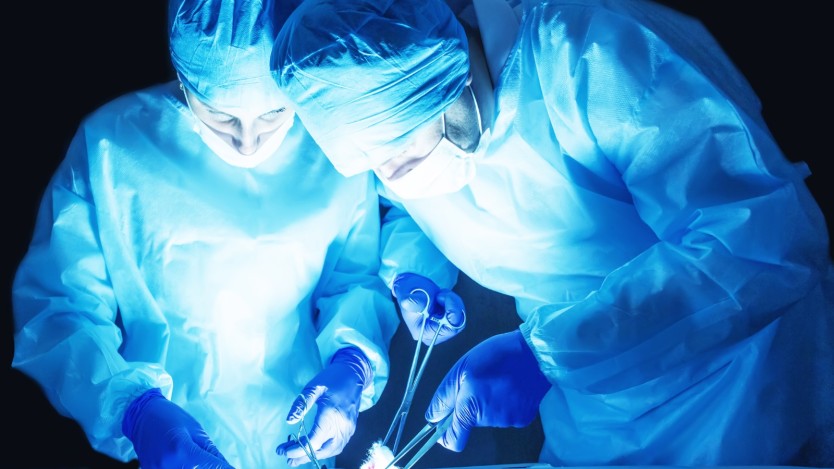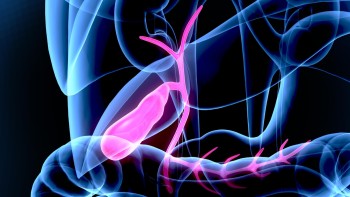What is an inflamed gallbladder? Causes, symptoms and treatments

- Facts about the gallbladder
- What is an inflamed gallbladder?
- What are the symptoms of an inflamed gallbladder?
- How is an inflamed gallbladder diagnosed?
- What is the treatment for an inflamed gallbladder?
- Request a free surgical assessment consultation with Operarme
Facts about the gallbladder
- Inflamed gallbladder, or cholecystitis, consists of an increase in the thickness of the walls of the gallbladder and its consequent weakening.
- The process of an inflamed gallbladder can be acute, if it occurs suddenly, or chronic if there are recurrent attacks over time.
- The most common and recommended solution in these cases is a laparoscopic gallbladder removal surgery.
What is an inflamed gallbladder?
Inflamed gallbladder is a concept that encompasses multiple pathologies of the gallbladder. In itself, we could define it as an increase in the thickness of the walls or inflammation of the gallbladder that causes alterations in the vascularisation, thereby weakening the structure of the walls and, if not treated in time, can lead to a rupture of the walls. This inflammation may be due to cholelithiasis in many cases.

Do you need gallbladder removal surgery?
Request a free and immediate appointment with our specialists in General Surgery
The medical term for an inflamed gallbladder is cholecystitis. This inflammation of the gallbladder can occur acutely or chronically over time. This means that the inflammation of the gallbladder walls can occur over a short period of time (acute) or over several days or weeks (chronic) with a slow growth of inflammation.
The causes or aetiology of an inflamed gallbladder are usually preferably twofold:
- An inflammation of the gallbladder caused by a cholesterol or gallstone (inflamed gallbladder or calculous cholecystitis).
- As a manifestation of another disease or trauma (inflamed gallbladder or calculous cholecystitis) in which stone obstruction or gallstones are not involved.

As a reminder, the gallbladder is an organ located in the lower region of the liver, in the upper right side of the abdomen. Together with the liver, the gallbladder is responsible for secreting substances that facilitate and promote the digestion of food as it passes through the intestines after its journey through the stomach.
Cholecystitis is inflammation of the gallbladder. It usually occurs when the drainage of the gallbladder is blocked.
Stone formation is caused by the accumulation of these digestive substances called bile salts and their precipitation inside the gallbladder.
What are the symptoms of an inflamed gallbladder?
The clinical features or symptoms of inflamed gallbladder (cholecystitis) are usually:
- An episode of pain in the right region of the abdomen with an intensity maintained over time and which does not improve with the intake of mild analgesics, lasting 24 to 48 hours and which has started after a copious meal or dinner.
- The presence of fever or body temperature above 37ºC.
After these two classic symptoms, it is possible that the patient suffering from an inflamed gallbladder or acute cholecystitis may be associated with a yellowish staining of the skin that is most evident in the sclera of the eyes (the white region of the eyes).
Jaundice is present in only 20% of cases of patients suffering from inflamed gallbladder.
On examination, the pain caused by compression over the gallbladder area while the patient takes a deep breath is characteristic. This is called Murphy's sign and is characteristic of acute cholecystitis.
How is an inflamed gallbladder diagnosed?
Inflamed gallbladder is diagnosed, in the first place, by the accompanying symptoms together with a physical examination consistent with this pathology (Murphy positive). These findings and characteristics allow us to focus a diagnosis of suspicion on this pathology.
Subsequently, an emergency blood test is usually ordered, which usually shows elements consistent with infection and inflammation in the blood.

In the same procedure, it is usually routine to request:
- Abdominal ultrasound: this imaging test is performed to help in the diagnosis, which confirms the diagnosis of an inflamed gallbladder or cholecystitis.
Other complementary tests such as CT of the abdomen, nuclear magnetic resonance or even endoscopy through the oesophagus and stomach (ERCP) are not essential but may be necessary in the most doubtful cases of inflamed gallbladder.
If you think you have an inflamed gallbladder, cholecystitis, and want to consult a specialist, click on the image below to request a diagnostic consultation for 49€ with our specialists in General and Digestive Surgery:

Do you need to visit a general surgeon?
Buy your medical voucher easily under Operarme's guarantees and select your nearest clinic.
What is the treatment for an inflamed gallbladder?
After being diagnosed with an inflamed gallbladder, cholecystitis, and depending on the severity of the case, the specialist may suggest various treatments to solve the problem, from following guidelines such as dietary changes and taking medication (anti-inflammatory drugs and antibiotics) to resorting to surgery to remove the gallbladder, abdominal or laparoscopic cholecystectomy.
Below we explain in more detail what these treatments consist of:
Treatment of gallbladder with drugs
If the patient comes to the emergency department within 72 hours of the first symptoms of an inflamed gallbladder or cholecystitis, a more conservative medical treatment based on antibiotics and painkillers or anti-inflammatory drugs is usually carried out.
This is in addition to guidelines such as:
- Fasting to rest the gallbladder.
- Eating a low-fat diet
This treatment is carried out in order to reduce the discomfort and pain caused by cholecystitis, as well as to postpone the surgical intervention for 8 to 12 weeks, once the acute process has subsided and the surgical intervention offers fewer complications.
Biliary drainage
Sometimes, prior to surgery, this procedure is performed, whereby a drainage tube is placed endoscopically to allow bile to drain out. This type of drain or tube is usually placed by interventional radiologists.
Gallbladder removal by laparoscopy: step-by-step
Treatment of an inflamed gallbladder is usually by laparoscopic surgery.
Laparoscopic Cholecystectomy surgery lasts approximately 1 to 2 hours.
This type of intervention is considered as the first line of treatment for one of the most dangerous complications of gallbladder pathology, such as inflamed gallbladder.
It consists of:
- Once the anaesthesia has taken effect, the surgeon makes three small incisions in the abdomen. Through one of the incisions, he introduces carbon dioxide, which allows him to enlarge the abdominal cavity, making it easier to see and manoeuvre.
- He then inserts the laparoscope through one of the incisions to view the inside of the abdomen and uses the remaining incisions for the surgical material needed during the gallbladder removal.
- Using the vision provided by the laparoscope, the surgeon carefully removes the gallbladder and extracts it through one of the abdominal incisions, suturing the bile ducts that connect the gallbladder to the small intestine and liver.
- Once the removal is complete, the incisions are sutured and the patient is awakened from anaesthesia.
This treatment lasts on average 1 to 2 hours and requires a hospital stay of 1 to 2 days.
It is performed under general anaesthesia and is characterised by a rapid recovery, in most cases after 5 to 10 days.
If you are thinking of solving the problems caused by gallstones and you believe that the best solution is their removal by laparoscopy, click on the image below to request an assessment consultation with our specialists:

Do you need gallbladder removal surgery?
Request a free and immediate appointment with our specialists in General Surgery
Open cholecystectomy: step by step
On certain occasions, especially in patients with major comorbidities or a large number of associated pathologies or diseases, it may not be possible to perform a laparoscopic surgical procedure and it may be necessary to remove the inflamed gallbladder via the abdominal route. This procedure is performed as follows:
- First, the anaesthetist will administer a general anaesthetic. This will keep the patient asleep and pain-free during the operation.
- Next, the team will clean the patient's chest and abdomen, as well as cover the area with sheets to keep the surgical area clean.
- The next step is to make an incision (approximately 15 cm) in the abdomen, just below the ribs on the right side.
- After locating the organ, the surgeon will remove the gallbladder and the blood vessels attached to it.
- To avoid complications, the doctor will check the area for bleeding or other problems. It is also common to place a small drainage tube. This tube will drain fluid from the abdomen to the outside, keeping it clean and allowing the operation to be completed.
- Finally, the surgeon will close the incision with stitches and cover it with a bandage.
Abdominal cholecystectomy lasts 30-90 minutes and requires a hospital stay of 1-4 days, depending on the particularities of each patient.
As for the anaesthesia used, general anaesthesia is required, and recovery is complete after 1 - 2 months.

Other surgical techniques for gallbladder or gallstone removal
Other surgical techniques such as endoscopic retrograde cholangiopancreatography (ERCP) are usually performed when the obstruction of the bile ducts is closer to the small intestine, in the papilla where the ducts from the liver and gallbladder (choledochus) and the pancreas meet.
This type of intervention is less common than the usual surgical intervention but depends on the situation of the gallstone.
Request a free surgical assessment consultation with Operarme
If you are thinking of solving the problems caused by cholecystitis with the gallbladder removal surgery by laparoscopy or abdominal route through Operarme, remember that you can request an immediate and free surgical assessment consultation with our general surgeons by calling at +34 91 141 33 56; by filling out this contact form; or by clicking below:

Do you need gallbladder removal surgery?
Request a free and immediate appointment with our specialists in General Surgery
Medical disclaimer: All the published content in Operarme is intended to disseminate reliable medical information to the general public, and is reviewed by healthcare professionals. In any case should this information be used to perform a diagnosis, indicate a treatment, or replace the medical assessment of a professional in a face to face consultation. Find more information in the links below:


